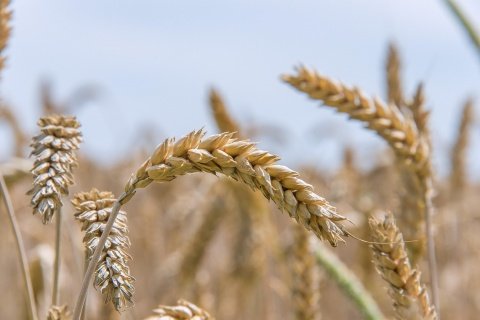 Researchers at Chalmers University of Technology have trialled a new scientific study to turn agricultural waste into cellulose-based materials that can be used to create clothing.
Researchers at Chalmers University of Technology have trialled a new scientific study to turn agricultural waste into cellulose-based materials that can be used to create clothing.
The study shows that wheat straw and oak husks can be converted into high-purity cellulose using a simplified soda pulping process, offering a less chemically intensive alternative to traditional cotton or wood-based cellulose production.
The research aims to address growing concerns about textile productions’ environmental impact, particularly the water-intensive cultivation of cotton and increasing pressure on wood resources. With textiles consumption per person increasing, the study predicts a “cellulose gap” as traditional sources reach capacity limits.
The research team evaluated four Swedish agricultural side streams: oak husks, wheat straw, potato pulp, and pressed sugar beet pulp. The materials were selected based on their cellulose content, seasonal availability, and potential to avoid competition with food production.
Commenting on the results, Diana Bernin, Assistant Professor at the Department of Chemistry and Chemical Engineering at Chalmers, said: “This is an important step towards being able to create textiles from waste products instead of using cotton, which isn’t climate-friendly, or wood, a material that we want to use for so many things while also needing to preserve it for the benefit of the climate.”
Wheat straw and oak husks show promise
The researchers use a three-stage processing approach involving acid pretreatment, soda pulping and bleaching to create a dissolving pulp, which is used to make clothing.
Unlike traditional wood processing, the method uses sodium hydroxide (lye) for pulping, which means the raw material is boiled in lye. According to the researchers, this technique eliminates the need for other chemicals and simplifies the production process.
“Lye doesn’t contain any toxins or substances that impact nature,” Bernin explained. “Soda pulping doesn’t work for wood fibres, so making textile pulp from wheat straw and oat husks requires fewer chemicals than making forest-based cellulose. It’s also a simpler procedure, in part because it doesn’t require processing such as chipping and debarking.”
The team then used scanning technology to analyse the chemical properties of the raw materials and processed pulps. Wheat straw and oat husks were found to successfully produce high-purity dissolving pulp, whilst potato pulp and sugar beet pulp were rejected due to processing difficulties.
Both materials achieved a cellulose purity level exceeding 96 per cent, surpassing commercial wood-based dissolving pulp.
Environmental benefits remain unclear
“In addition, it increases the economic value of oats and wheat, when leftovers from their production can be used as raw materials for cellulose extraction,” Bernin noted, evaluating the financial opportunities of agricultural waste utilisation.
However, a life cycle assessment and process modelling has suggested that the agricultural waste pulp has a higher environmental impact than wood pulp, considering factors such as climate change, acidification potential, and water deprivation.
Joanna Wojtasz, lead author and researcher at Tree to Textile, added that the results of the research should inspire further investigation: “The study shows that there is a lot of potential in agricultural waste,” Wojtasz said. “We really shouldn’t disregard the opportunity to use this type of cellulose streams for our future clothing.”
The researchers note that the methodology could extend to other agricultural materials, and are currently working on creating textile fibres from wheat-based dissolving pulp in follow-up studies.
Similar applications for waste straw pulp have been suggested for paper production, with DS Smith trialing the application of waste cellulose materials to create unbleached paper pulp last year. 

